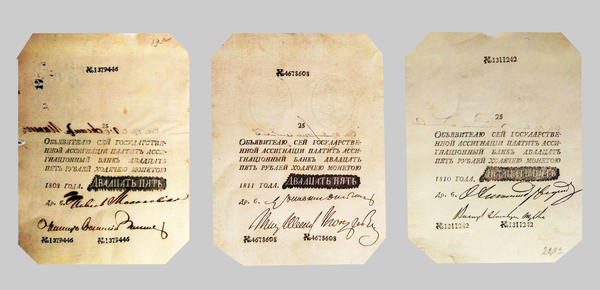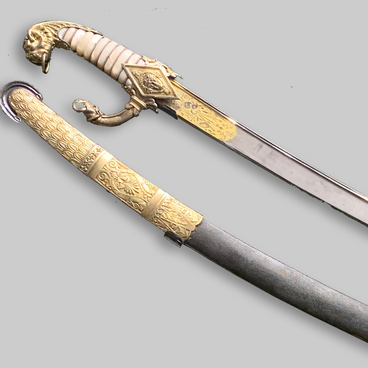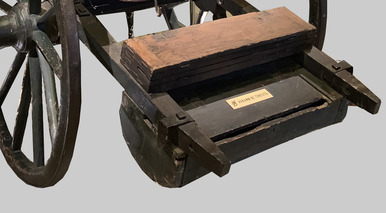The French Emperor began preparing for war with Russia a few years before the invasion. Presumably, in 1810 he ordered to print counterfeit Russian banknotes in denominations of 25, 50 and 100 rubles.
The banknotes were printed for settlements with the soldiers of the Grand Armee, the armed forces of the Napoleonic Empire, as well as for payment on the territory of Russia for the purchases of fodder and food from the local population. But the main goal was to undermine the Russian economy.
The monetary reform carried out in Russia in 1819 proves that Napoleon had really achieved his goal, although lost the war. By that time, there were many counterfeits in use, and the rate of the paper ruble was low.
Fake money was printed in strict secrecy. To achieve this, only a few specialists were involved who were responsible for the printing processes: typographer Fagne, engraver Lale and the head of the police department, Charles Demaire who supervised them.
Lale and Fagne produced over 700 copper boards, printed forms with a cliché for the banknote. The fakes looked even better than the originals, because they were printed on high quality paper.
Counterfeit notes were not easy to identify, as they were specially crumpled and rubbed to artificially wear them out and cause traces of being in circulation. But some copies were identifiable due to the presence of typos: the Russian letter ‘D’ was sometimes substituted by ‘L’.
The authentic banknotes had an ink signature on them. On the fake notes, the signature was printed typographically. With due care, it was possible to notice the absence of dents on the rear side of the fake note; on authentic money, such dents were inevitably caused by the pen pressed against the fibrous material of the paper sheet.
Apart from that, the bill looked like the original, as it was printed with watermarks and the frame. The top frame said ‘Love for the Fatherland’, the bottom frame said ‘For the benefit of the State’, and the side frames said ‘The State Treasury’.
In the corners, there were crowns with the heraldic emblems of the Astrakhan, Moscow, Kazan and Siberian kingdoms under them. Above, in front of the printed text, there were embossed ovals with allegorical emblems and drawings.
There are three signatures in brown ink on the bank notes: Advisor to the Board of Banks, Director of the Bank and Cashier.
This image of banknotes remained unchanged until 1818.
The banknotes were printed for settlements with the soldiers of the Grand Armee, the armed forces of the Napoleonic Empire, as well as for payment on the territory of Russia for the purchases of fodder and food from the local population. But the main goal was to undermine the Russian economy.
The monetary reform carried out in Russia in 1819 proves that Napoleon had really achieved his goal, although lost the war. By that time, there were many counterfeits in use, and the rate of the paper ruble was low.
Fake money was printed in strict secrecy. To achieve this, only a few specialists were involved who were responsible for the printing processes: typographer Fagne, engraver Lale and the head of the police department, Charles Demaire who supervised them.
Lale and Fagne produced over 700 copper boards, printed forms with a cliché for the banknote. The fakes looked even better than the originals, because they were printed on high quality paper.
Counterfeit notes were not easy to identify, as they were specially crumpled and rubbed to artificially wear them out and cause traces of being in circulation. But some copies were identifiable due to the presence of typos: the Russian letter ‘D’ was sometimes substituted by ‘L’.
The authentic banknotes had an ink signature on them. On the fake notes, the signature was printed typographically. With due care, it was possible to notice the absence of dents on the rear side of the fake note; on authentic money, such dents were inevitably caused by the pen pressed against the fibrous material of the paper sheet.
Apart from that, the bill looked like the original, as it was printed with watermarks and the frame. The top frame said ‘Love for the Fatherland’, the bottom frame said ‘For the benefit of the State’, and the side frames said ‘The State Treasury’.
In the corners, there were crowns with the heraldic emblems of the Astrakhan, Moscow, Kazan and Siberian kingdoms under them. Above, in front of the printed text, there were embossed ovals with allegorical emblems and drawings.
There are three signatures in brown ink on the bank notes: Advisor to the Board of Banks, Director of the Bank and Cashier.
This image of banknotes remained unchanged until 1818.



